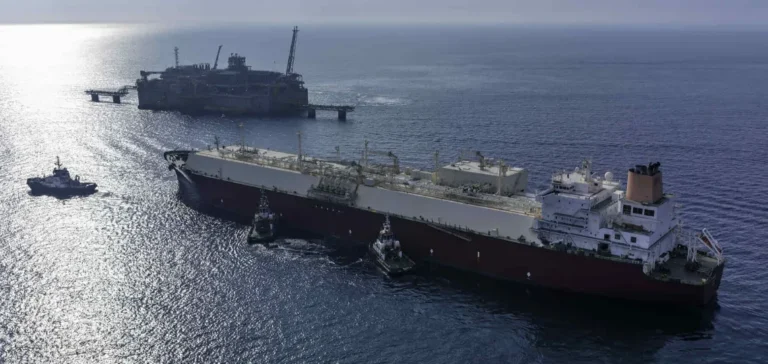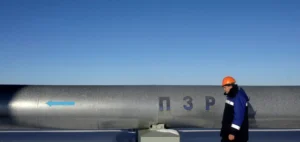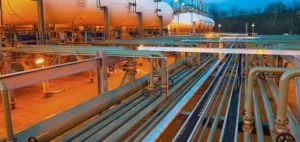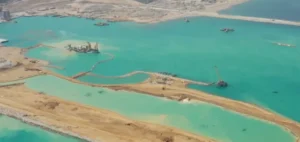Two Russian vessels transporting liquefied natural gas (LNG) from the Arctic LNG 2 project departed the Tieshan terminal in the Port of Beihai, southern China. These movements come as both carriers, the Voskhod and Zarya, are subject to US and EU sanctions.
The Voskhod, formerly named North Mountain, left the Beihai terminal on September 7. It was subsequently located southeast of China’s Hainan Island, according to maritime tracking data. Its draft fell from 11.6 metres to 9.6 metres, suggesting that the LNG cargo was unloaded.
Beihai terminal’s logistical capacity
The Beihai LNG terminal, operated by the National Oil and Gas Pipeline Network Group (PipeChina), has an annual receiving capacity of 6 mn metric tons. It is equipped with a berth that can accommodate LNG carriers ranging from 80,000 to 266,000 cubic metres, along with four LNG storage tanks, each with a capacity of 160,000 cubic metres.
PipeChina is jointly owned by several state-owned groups, including PetroChina (29.9%), Sinopec (14%) and CNOOC (2.9%). According to Chinese market sources, the recent deliveries are likely spot cargoes rather than long-term commitments, as the country currently has no urgent need for additional LNG imports.
Increasing flows despite sanctions
The Zarya, formerly known as North Way, was located in the Gulf of Tonkin on September 8 after passing Hainan Island. It was the third sanctioned vessel to call at Beihai recently, following the Arctic Mulan in late August.
The terminal reportedly sold up to 100 LNG trucks per day, capitalising on a domestic price of around Yuan 4,000/cu m. A buyer based in China said these deliveries have generated robust logistics activity at the site.
US response under scrutiny
The delivery of Russian LNG to China through these vessels is being watched closely as a potential test case for the US administration. According to sector analysts, any action taken by the US Department of the Treasury’s Office of Foreign Assets Control (OFAC) could determine whether Arctic LNG 2 volumes will continue reaching other markets.
In June, after commissioning of the project’s second liquefaction train, loadings resumed with the Iris arriving on site. The Iris and the Buran were sailing off Japan’s coast on September 8, both carrying LNG from Arctic LNG 2, according to available tracking data.
Westward routing emerges
Another ship, La Perouse, took a different path, leaving the Arctic and heading toward Western Europe. It is the first recently loaded vessel to travel westward via the Northern Sea Route. The vessel was last located off the coast of Ireland.
Novatek holds a 60% stake in the Arctic LNG 2 project. The other shareholders are TotalEnergies, China National Petroleum Corporation (CNPC), China National Offshore Oil Corporation (CNOOC) and Japan Arctic LNG BV, each holding a 10% stake.






















